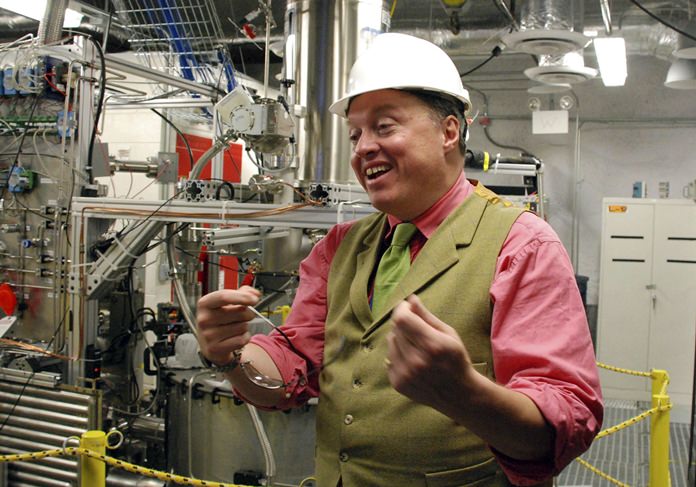Washington (AP) – Scientists have come up empty-handed in their latest effort to find elusive dark matter, the plentiful stuff that helps galaxies like ours form.
For three years, scientists have been looking for dark matter – which though invisible, makes up more than four-fifths of the universe’s matter – nearly a mile underground in a former gold mine in Lead, South Dakota. But on Thursday, July 21 they announced at a conference in England that they didn’t find what they were searching for, despite sensitive equipment that exceeded technological goals in a project that cost $10 million to build.

“We’re sort of proud that it worked so well and also disappointed that we didn’t see anything,” said University of California, Berkeley physicist Daniel McKinsey, one of two scientific spokesmen for the mostly government-funded project.
The mine project, called Large Underground Xenon experiment or LUX, was one of three places looking for dark matter. Another is on the International Space Station and a third is an effort to create dark matter at the Large Hadron Collider, run by the European consortium that found the Higgs Boson particle.
At the South Dakota site, more than 4,800 feet of earth helped screen out background radiation. Scientists used a large vat of liquid xenon that they hoped would produce a flash of light when weakly interacting massive particles, or WIMPS, bounced off the super-cooled liquid.
Not finding WIMPS may drive physicists to think about new candidates for dark matter, even though WIMPS are still the most viable option, said Neal Weiner, director of the Center for Cosmology and Particle Physics at New York University, who was not part of the research.
Scientists are already starting to revamp the South Dakota mine site for a $50 million larger, higher-tech version of LUX, called LZ, that will be 70 times more sensitive and should start operations in 2020, said Brown University’s Richard Gaitskell, another scientific spokesman for LUX.
Even that won’t be easy. Dark matter is everywhere. Hundreds of millions of dark matter particles pass through Earth every second, Gaitskell said. But the problem is they are “just crazy weak” and they zip through Earth as if it barely exists, he said.
Gaitskell has spent 28 years hunting these particles.
“Over 80 percent of our matter is in this dark matter form. You and I are the flotsam and jetsam; dark matter is the sea,” Gaitskell said. “That’s why one doesn’t give up. We’ve got to figure out what this dark matter component is.”
When pressed, Gaitskell acknowledged the possibility, however slight and unlikely, that scientists are looking for something that isn’t there.
“It’s certainly there. We know dark matter exists” because of the way it helps form galaxies and makes light bend around galaxy clusters, McKinsey said.
Weiner said, “It’s hard to know when we will find dark matter because we don’t know precisely what it is. Of course, that’s what makes the search for it such a big deal.”




